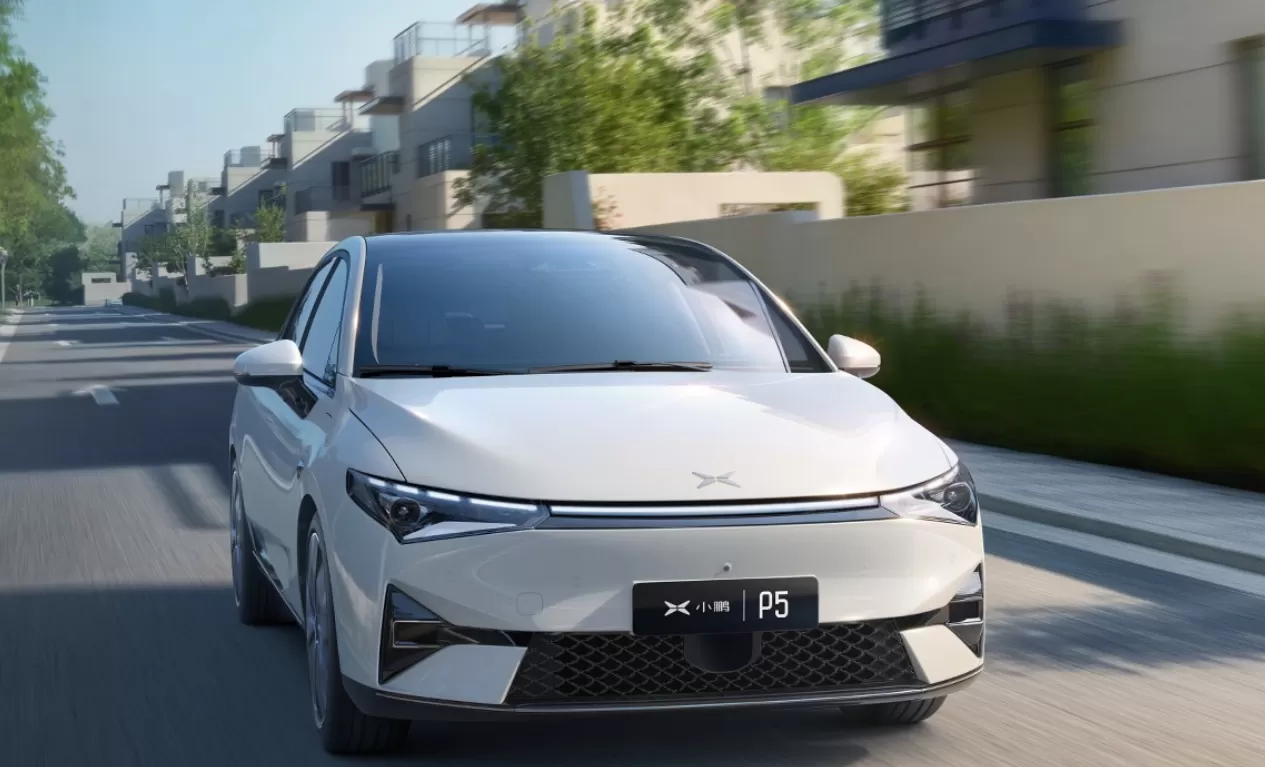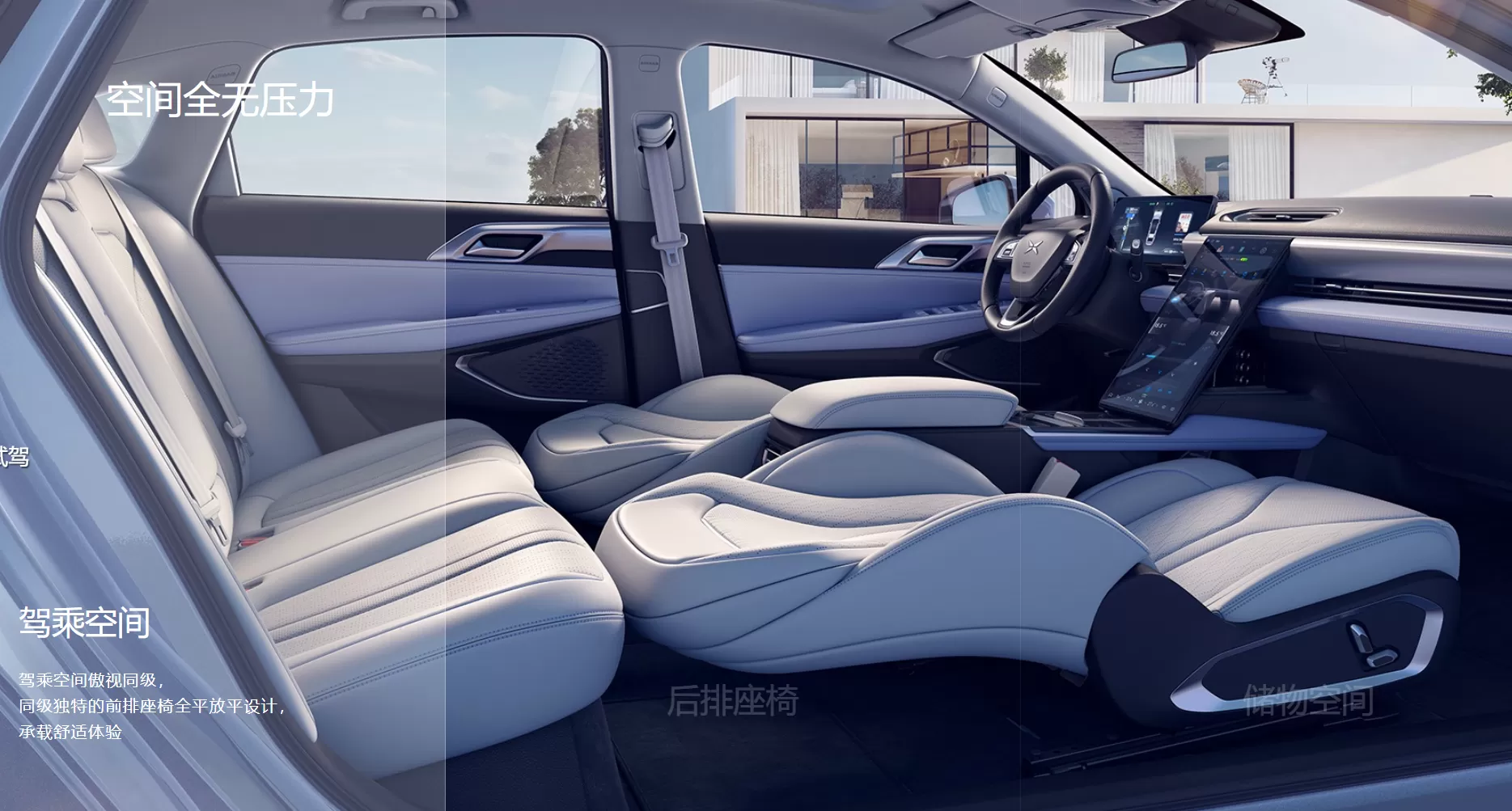Xpeng Motors has released two all-electric sedans, the P7 and P5. which, while both part of the P series, are not directly related. When the P5 was first launched, Xpeng focused its marketing on its lidar and advanced driver assistance systems. Beyond these smart features, how does the actual driving experience of the P5 measure up?
Performance: As an all-electric vehicle, the Xpeng P5 theoretically should offer very rapid acceleration, similar to the Tesla Model 3. However, in practice, the P5’s tuning is clearly geared towards comfort and smoothness, with a more subdued acceleration profile. In sport mode, the accelerator becomes more responsive, but in urban driving, there's no need to worry about overly aggressive acceleration. For quick overtaking, the P5 responds swiftly when you press the accelerator, making for a smooth maneuver. Overall, the P5’s powertrain tuning favors comfort and smoothness, making it more beginner-friendly.

Braking Feel: The braking feel of the Xpeng P5 has improved compared to the previous G3 model. The braking travel is more linear and even, though the pedal remains somewhat firm. Additionally, the P5 features CRBS (regenerative braking system), which prioritizes regenerative braking when the brake pedal is pressed. When regenerative braking alone isn’t enough, mechanical brakes engage, and the transition is quite smooth. In standard driving mode, the regenerative braking is mild and entirely acceptable. Notably, the P5 also offers a mode with no regenerative braking at all, providing a driving experience akin to traditional gasoline vehicles. Additionally, there is a single-pedal mode, similar to Tesla’s, giving users multiple options to suit their preferences. Personally, I prefer modes with minimal or no regenerative braking.
Chassis Vibration Damping: Previously, the Xpeng P7 displayed decent flexibility over rough surfaces but had noticeable aftershocks and body roll. The P5 has shown significant improvement in this regard, maintaining flexibility and a sense of luxury while better controlling aftershocks and body roll. Although there is still a slight amount of aftershock, it is much less than in the P7. Therefore, despite the P5’s lower positioning compared to the P7. its chassis tuning actually feels more refined.
Steering: The P5’s steering is well-calibrated, offering a light feel at low speeds, making parking and maneuvering effortless. At higher speeds, the steering becomes heavier, enhancing stability. However, the overall chassis and steering setup of the P5 leans towards a lighter, more comfortable feel. The vehicle’s response to sudden lane changes is not very sharp, lacking a sporty feel, and the steering is not particularly incisive.
Noise Insulation: At low speeds, the P5 benefits from the inherent quietness of electric vehicles. On urban expressways, noise insulation is also commendable at speeds of up to 80 km/h, meeting the standards of mainstream models in the 200.000 RMB price range or slightly above.

Space and Comfort: Although the Xpeng P5 is smaller than the P7. its rear space (particularly headroom and legroom) is quite generous, surpassing competitors in the same price range like the Accord, Camry, and Teana. At 172 cm tall, I found adequate headroom and the ability to comfortably cross my legs. The central floor hump is very minimal.
However, the seat comfort is relatively average. While the material and padding are good and soft, the seat cushion is somewhat short and low. Fortunately, the ample legroom allows you to extend your legs forward, providing better thigh support (though still a bit short). The short seat cushion is primarily to allow the front seats to recline fully flat, creating a near-level surface with the rear seat cushions. If the cushion were longer, this seamless connection would be compromised. Therefore, Xpeng has compromised on the seat cushion length to achieve this feature.
Human-Machine Interaction: The central screen in the P5 is larger than in the P7. with high resolution and excellent color display. The touch response and smoothness are also good. The P5’s rearview and 360° panoramic cameras control distortion well, and the panoramic stitching is relatively natural, offering high usability.
Additionally, we experienced the P5’s advanced driver assistance system. Due to favorable road conditions and light traffic on the test day, we could not fully assess its performance in heavy traffic. The system responds smoothly to detected vehicles, and lane changes are executed gently without abruptness. However, its performance in more complex or high-traffic scenarios remains to be seen. Regardless, Xpeng’s XPilot remains an assistance system, so the driver must maintain control of the steering wheel.
Overall, despite the Xpeng P5 being cheaper and positioned lower than the P7. it does not lag behind in terms of electronic features, software sophistication, space, and mechanical tuning. In fact, aspects like chassis comfort and lidar integration are even better than in the P7. making the P5 a well-rounded and refined product. This shows that the “buy new, not old” principle applies not only to digital products but also to automotive products.






